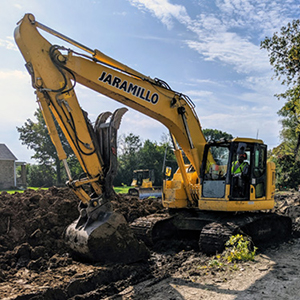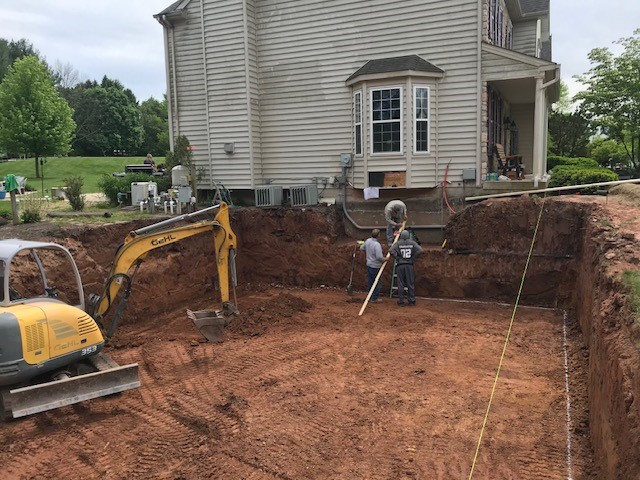Introducing the Art of Excavation: Pro Tips for Safe and Effective Digging
In the world of excavation, the mastery of efficient and secure excavating is an art kind that calls for expertise, adherence, and accuracy to well-known techniques. As dirt is turned and planet is relocated, the complexities of excavation expose themselves, demanding a keen understanding of tools, dirt make-up, security methods, and ecological considerations. The know-how needed to navigate these aspects successfully can imply the difference in between a successful excavation job and a potential disaster. By deciphering the layers of this intricate procedure, a world of strategies and insights awaits those looking for to elevate their excavation abilities to new elevations.
Importance of Correct Tools
To ensure the safety and security and efficiency of any type of excavation task, making use of the ideal tools is paramount. Excavation jobs vary in extent and intricacy, varying from tiny residential landscaping jobs to large-scale building undertakings.
These flexible devices come in various sizes to suit various job demands. Small excavators are optimal for smaller jobs, while bigger excavators tackle more considerable jobs effectively.
Excavators excel in tasks that need pressing huge amounts of soil or debris. By spending in the ideal equipment, excavation jobs can be finished securely, on time, and with precision.
Comprehending Dirt Make-up
A thorough understanding of dirt make-up is fundamental for performing excavation jobs with accuracy and safety. Understanding the different types of dirt is essential as it directly impacts excavation methods, equipment choice, and general task efficiency.
Silt fragments are smaller than sand yet bigger than clay, supplying modest drain and cohesion. Organic issue, such as decomposing plant product, impacts soil fertility and security.
Before starting excavation, performing dirt tests to establish its structure and features is crucial. This info aids in selecting the appropriate devices, implementing precaution, and creating excavation techniques customized to the particular dirt conditions - lancaster trenching. By understanding dirt structure, excavation specialists can enhance job outcomes while making sure safety and security and adherence to best techniques
Precaution and Protocols
Recognizing dirt make-up is the cornerstone whereupon safety and security steps and protocols for excavation tasks are developed, making sure the health of workers and the success of the endeavor. There are several key measures that need to be carried out to alleviate dangers and stop accidents. when it comes to safety throughout excavation.
First and foremost, before any kind of excavating starts, a complete inspection of the site ought to be carried out to identify any possible hazards such as below ground energies, unsteady soil conditions, or nearby structures that could pose a danger. It is vital to have an experienced person manage the excavation procedure to ensure that all safety protocols are complied with purely.
Moreover, all employees associated with the excavation should be effectively learnt safe digging techniques and the proper operation of equipment. Individual protective devices (PPE) such as construction hats, high presence apparel, handwear covers, and safety boots should be used in any way times to lessen the threat of injuries. excavating ohio. Regular safety and security meetings and tool kit talks should additionally be performed to maintain all employees notified concerning possible hazards and enhance secure click for source job practices. By sticking to these safety and security steps and methods, excavation tasks can be completed efficiently and without incident.
Reliable Excavation Preparation
When starting an excavation task, thorough preparation is important to make sure effectiveness, security, and pop over to this site effective outcomes. Reliable excavation planning involves numerous crucial steps that are crucial for the smooth implementation of the job. The initial step is to carry out a detailed website evaluation to determine any possible risks, such as underground energies or unstable dirt conditions. This details is crucial for developing a thorough excavation plan that consists of safety actions and risk reduction techniques.
When the website evaluation is full, the following action is to develop a clear timeline and timetable for the excavation activities. This includes establishing the series of jobs, devices needs, and workforce allowance. Proper scheduling helps stay clear of delays and ensures that the task remains on track.

Furthermore, interaction amongst all employee is critical throughout the planning stage. Clear regulations, normal updates, and effective control are important for an effective excavation project. By investing time and initiative in meticulous preparation, excavation groups can dramatically boost productivity, decrease dangers, and attain successful results.

Handling Environmental Factors To Consider
With boosting focus on environmental sustainability in building and construction methods, managing environmental factors to consider has become an important facet of excavation tasks. Excavation activities have the prospective to affect the surrounding environment through dirt disintegration, debris runoff, environment interruption, and contamination of water resources. To minimize these threats, it is vital to implement best techniques that focus on environmental protection.

Additionally, proper waste monitoring is important to avoid soil and water contamination. Applying procedures for the disposal of hazardous materials, recycling of waste materials, and reducing making use of unsafe chemicals can dramatically minimize the environmental impact of excavation tasks. By integrating these practices into excavation planning and execution, construction firms can make sure that their tasks are not just secure and efficient but likewise eco accountable.
Conclusion
In verdict, understanding the art of excavation requires an extensive understanding of correct equipment, dirt composition, precaution, and reliable preparation. By adhering to these guidelines and thinking about ecological factors, excavations can be carried out securely and successfully. It is critical to focus on safety and performance in every digging project to make sure successful end results.
As soil is turned and earth is relocated, the details of excavation reveal themselves, requiring an eager understanding of tools, dirt composition, safety methods, and ecological considerations.To make certain the safety and performance of any excavation task, making use of the appropriate tools is paramount.A detailed understanding of soil structure is basic for executing excavation jobs with precision and safety and security. Comprehending the various types of dirt is important as it directly affects excavation approaches, equipment selection, and overall task performance. By comprehending soil make-up, excavation professionals can improve job outcomes while guaranteeing safety and security and adherence to best practices.